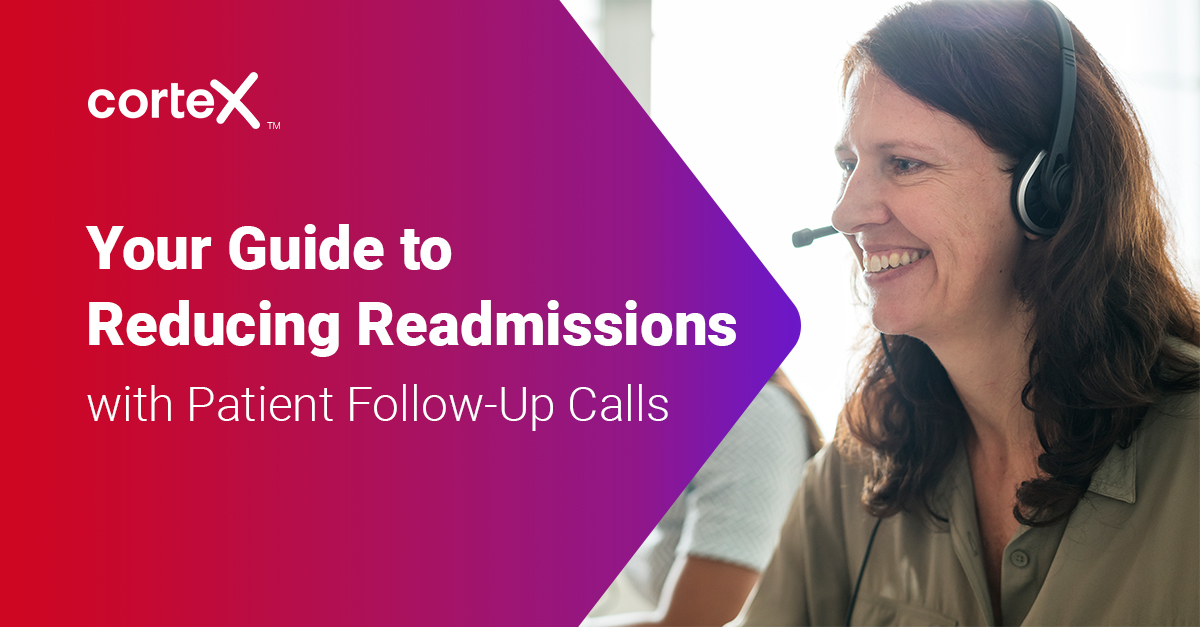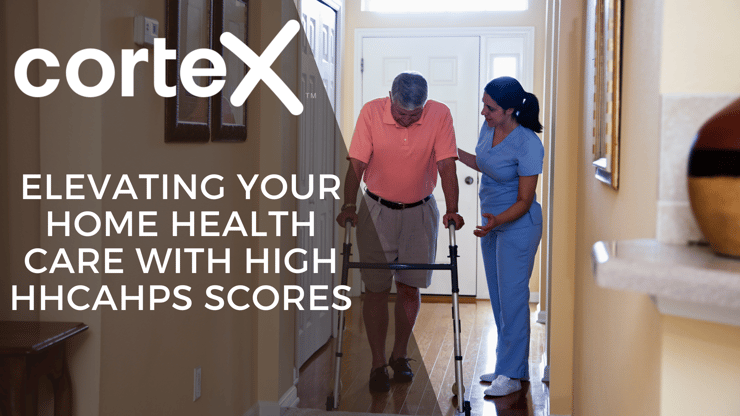As it’s difficult to manage a call queue using Excel or a report from an EMR, most in-house patient follow-up processes often result in lower contact rates and other inefficiencies as teams balance on-service and discharged patients. Even though most facilities or agencies require patient follow-up calls, most teams struggle to find the resources.

While the goal should be to optimize resources and reduce readmissions, checking in helps improve outcomes and also creates a unique patient experience.
Fortunately, there are some things you can do now to improve performance. Below is your guide to preventing readmissions and redefining the patient experience at home and it starts with three crucial questions.
- How can you enact a program that will endure and satisfy your patients’ needs
- How can you know what to ask to drive the most value from those conversations
- How can you decipher when to call and how often?
Creating a Patient Follow-Up Program
Providers are looking to patient follow-up phone calls as a way to keep discharged patients from readmitting to the hospital. At first glance, a follow-up call system may seem easy to implement and many agree. In a 2016 Cortex survey, we found that 87 percent of SNF/HHA admins reported creating and maintaining programs for follow-up calls. However, after only three months 80 percent had given up.
Q: Why do so many proactive admins ultimately give up on these programs? And how can you enact a program that will endure and satisfy your patients’ needs?
A: Facilities need structure to conduct follow-up calls.
Talk with any administrator or clinician who has attempted to run a follow-up call program, and you’ll quickly learn about various challenges, including the following questions:
- Which patients should be called?
- When should they be called?
- At what frequency should they be called?
- What should be asked?
- How should we follow up if they don’t answer?
- How do we gather the information in an actionable format?
Each follow-up call has the potential to be actionable, and calls to recently discharged patients often can uncover ongoing struggles in a patient’s recovery.
Q: How can you know what to ask and drive the most value from those questions?
A: The best questions are simple.
Cortex has had ample time to find the answers you’ve been searching for; we’ve completed over 200,000 successful follow-up phone calls to patients recovering from a recent inpatient stay (hospital and/or SNF). Through experience, we’ve identified three questions that are the most effective in preventing readmissions:
- Are you taking your medications as prescribed?
- Have you had any of the following symptoms: fever, nausea, vomiting, chills, weakness, or shortness of breath?
- Have you had any falls recently?
At first glance, these questions may seem too simple and obvious, but there are nuances in phone surveys that should be considered.
First, post-acute patients are typically older and struggling with multiple comorbidities. This can lead to difficulty in understanding complex questions, questions using number scales for answers, or questions that use jargon with which patients are not familiar.
Secondly, the real work is done in the follow-up to each answer given by the patient. For example, if a patient responds that she has had a fall recently, the caller should then ask a series of clarifying questions:
- Where did the fall occur?
- Are you injured because of your fall?
- What part of your body was injured in the fall?
- Are you considering seeking medical treatment?
Of course, knowing what to ask and know when, how often, and of whom they should be asked are not the same.
Q: How can you decipher when to call and how often? What’s the best method to contact the patient on the first call?
A: Keep to a schedule and automate a queue.
There are multiple scenarios that might increase or decrease the number of calls per patient. Some use a 2, 7, 15, 30-day call schedule which boils down to one satisfaction call, two wellness calls, and one reacquisition call. In our experience, this is the best-case scenario for a facility or home health agency. If you don’t have resources for four calls, then we recommend a day 2 satisfaction call and at least one wellness call as a minimum.
The next challenge is automating a queue or, in other words, having patients trickle through a workflow so you know exactly who and when to contact. Most providers reach about 10-25% of their patients as it often takes two or three attempts. Our patient follow-up call platform is built to automate this process to reach the most amount of patients as successful as possible which averages about 75% of patients.
Preventing readmission isn’t an impossible dream. With the right people asking the right questions at the right time, you can ensure that your former patients get the help they need when they need it.
About Cortex
Cortex provides patient satisfaction and wellness calls in real-time to evaluate patient status and health. When an at-risk patient is detected, we immediately route the notice to the most recent care provider. Cortex follows all HIPAA regulations and considers whether the patient is within or outside of the penalizing window the CMS and other payers have identified for readmissions.
Our customers leverage the Cortex network of Registered Nurses to make those follow-up calls to patients throughout the country after they leave an inpatient setting (hospital and/or SNF). Although the platform is available for customers to use in-house, providers find the telephone bedside manner and availability of the nurses to be advantageous and efficient to what they can do with in-house staff.
If you’d like to learn more, please contact us fill out the form below or here.




